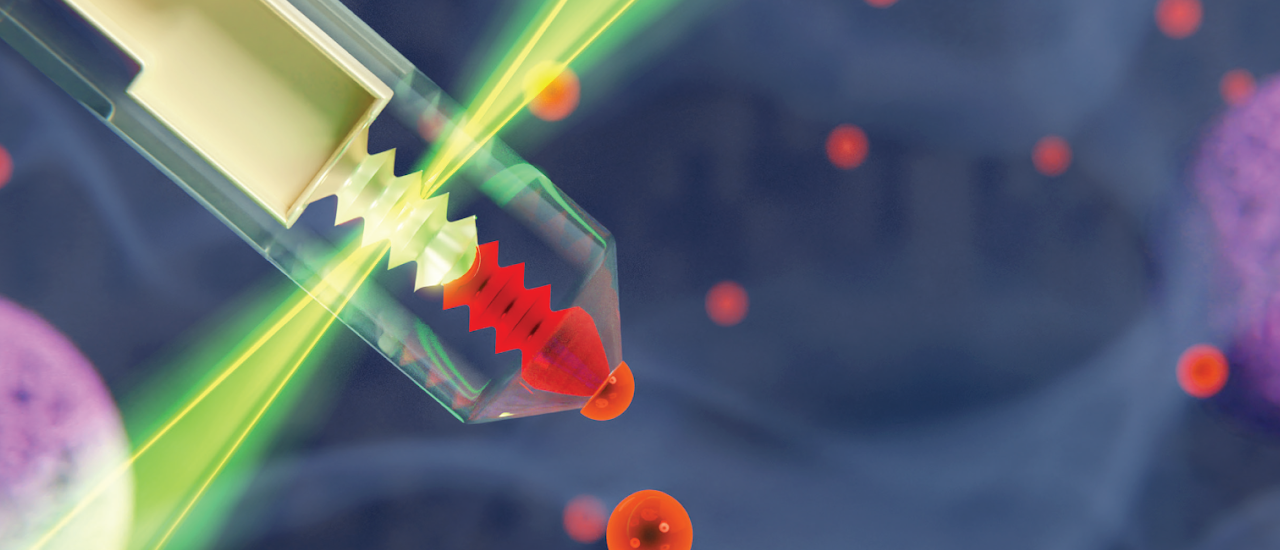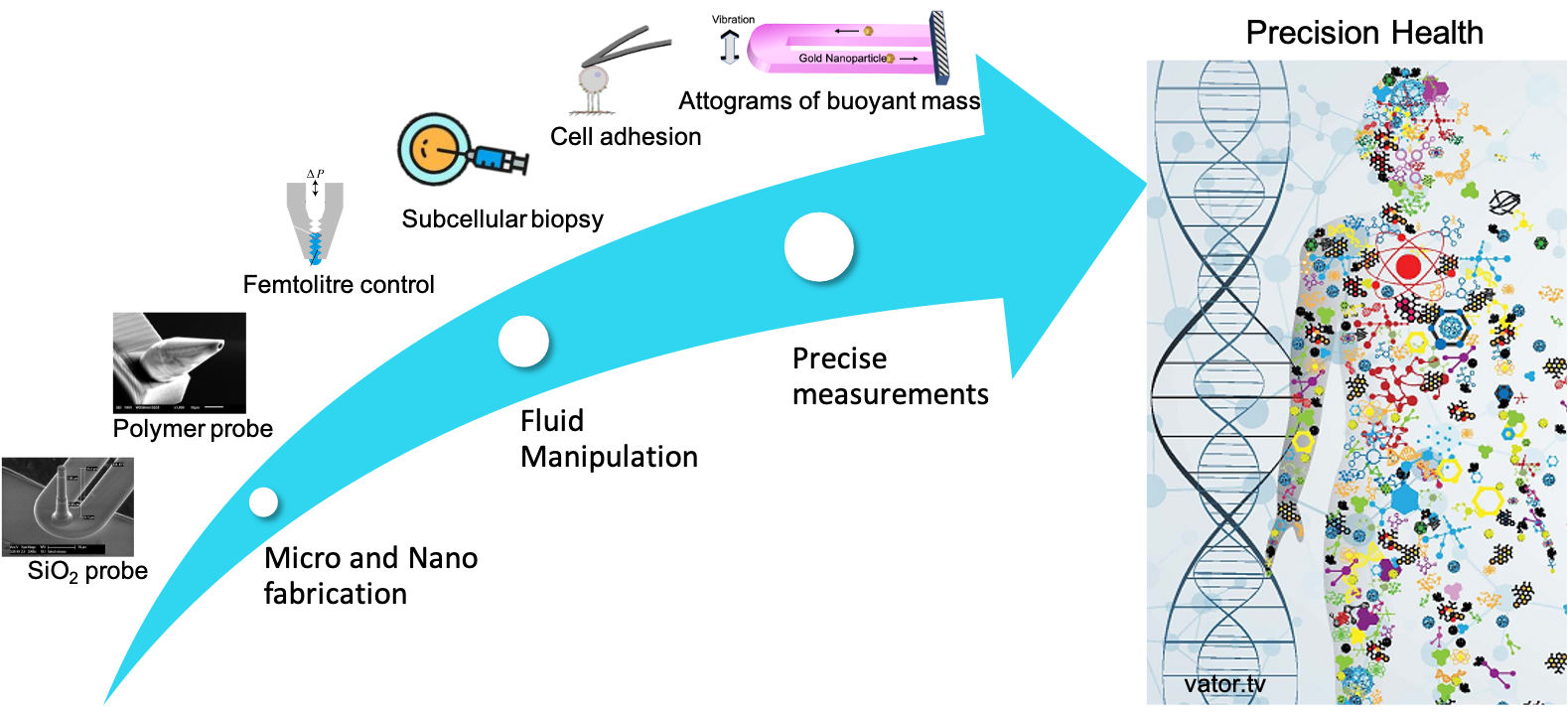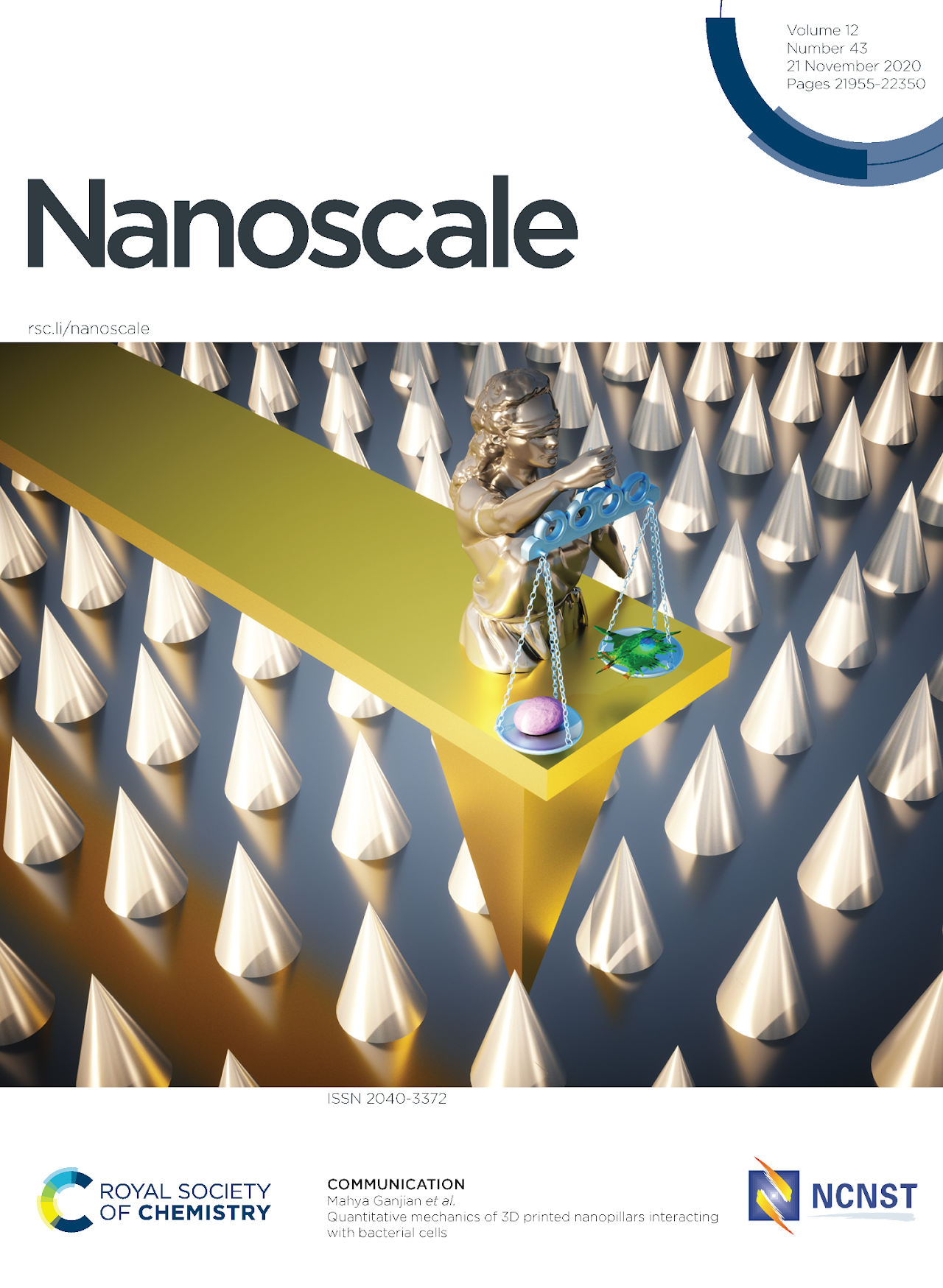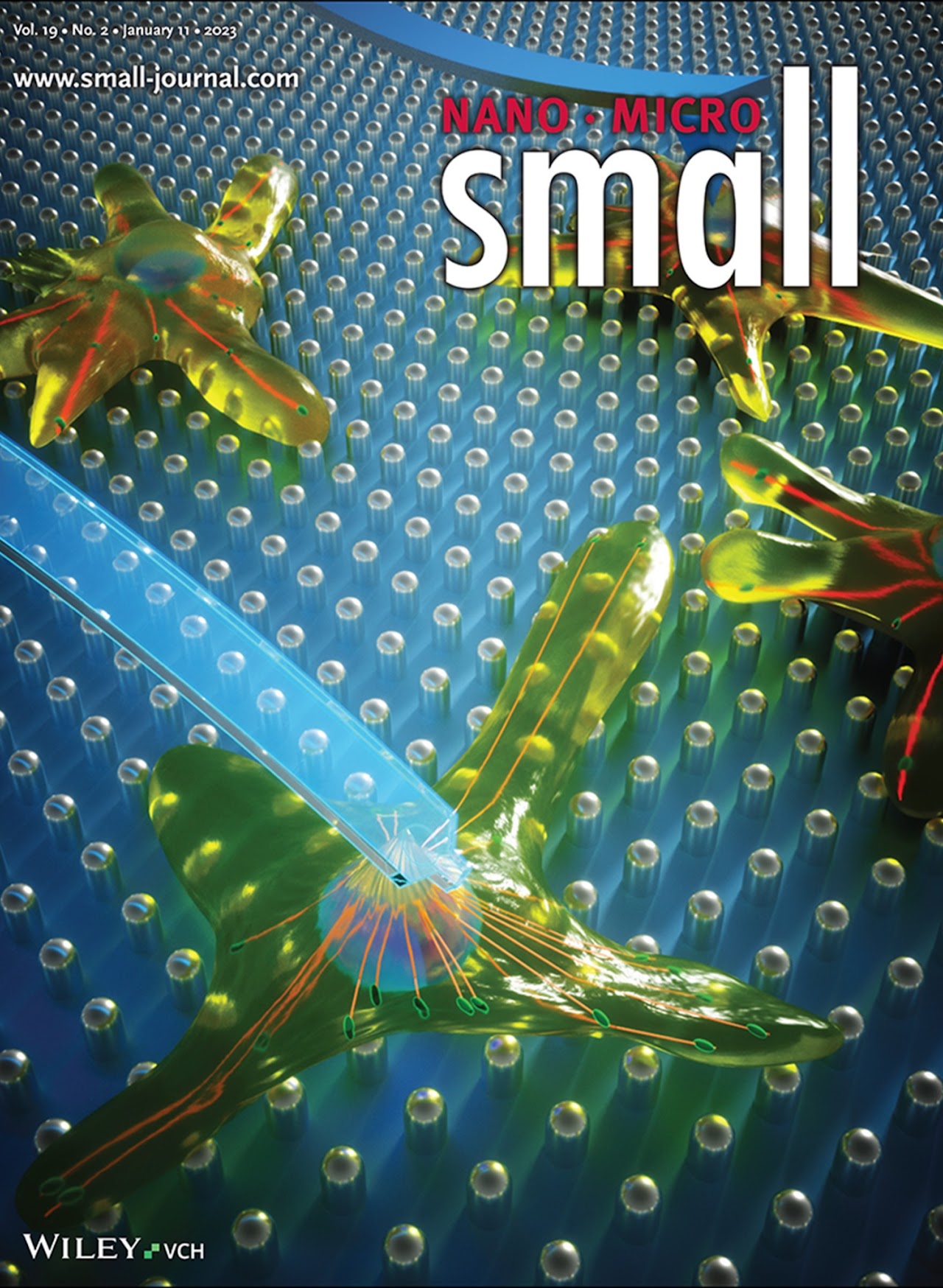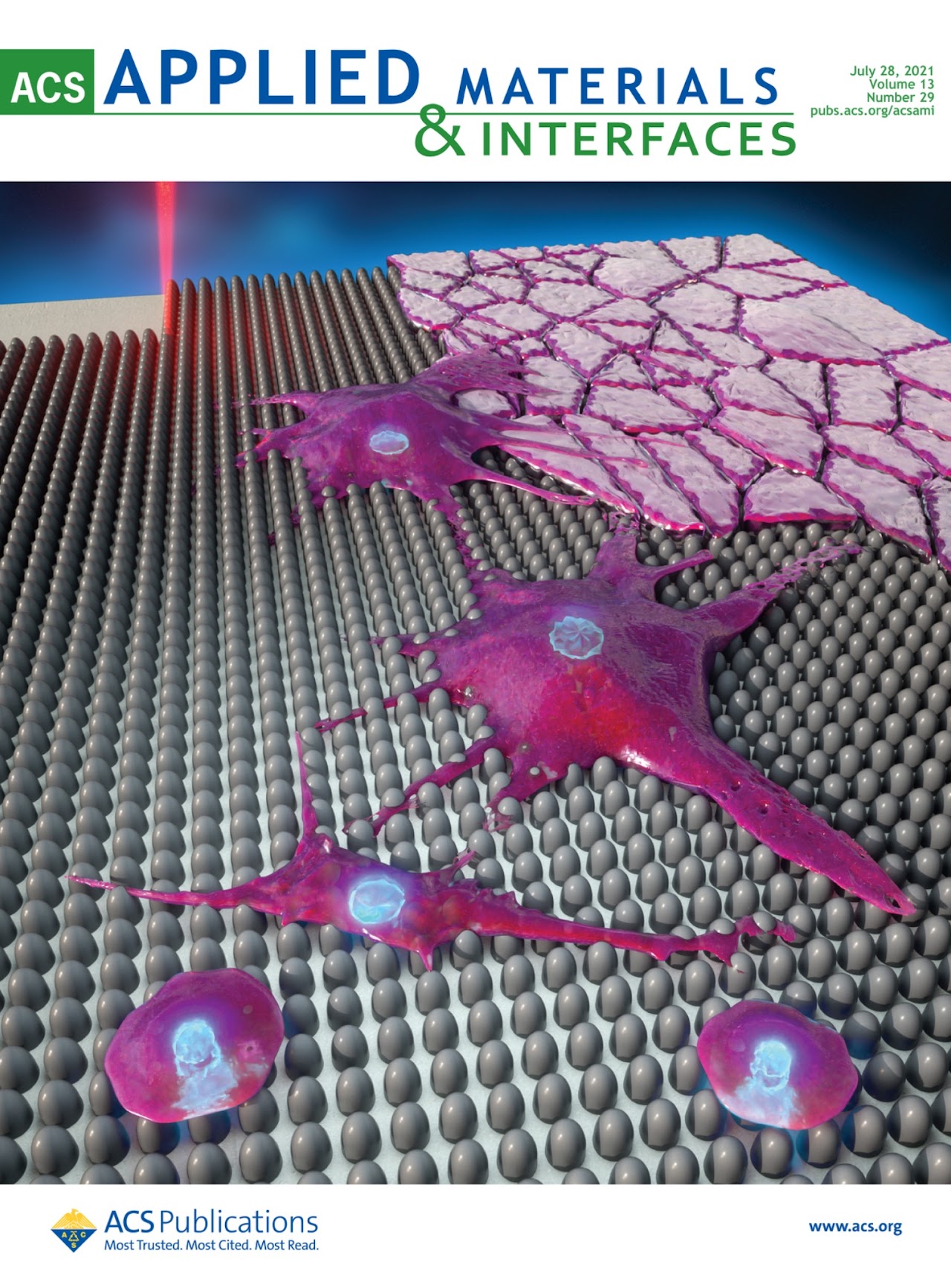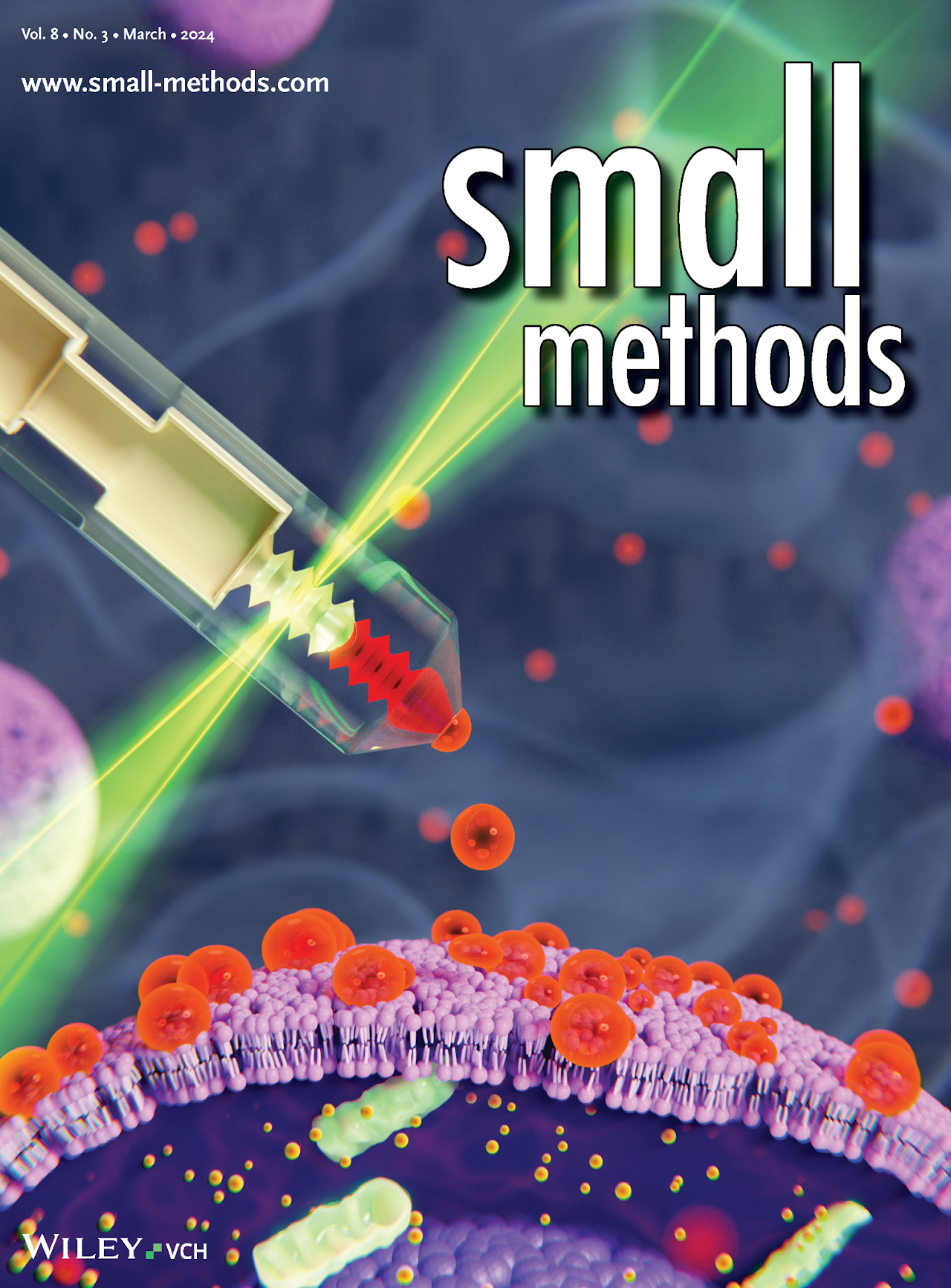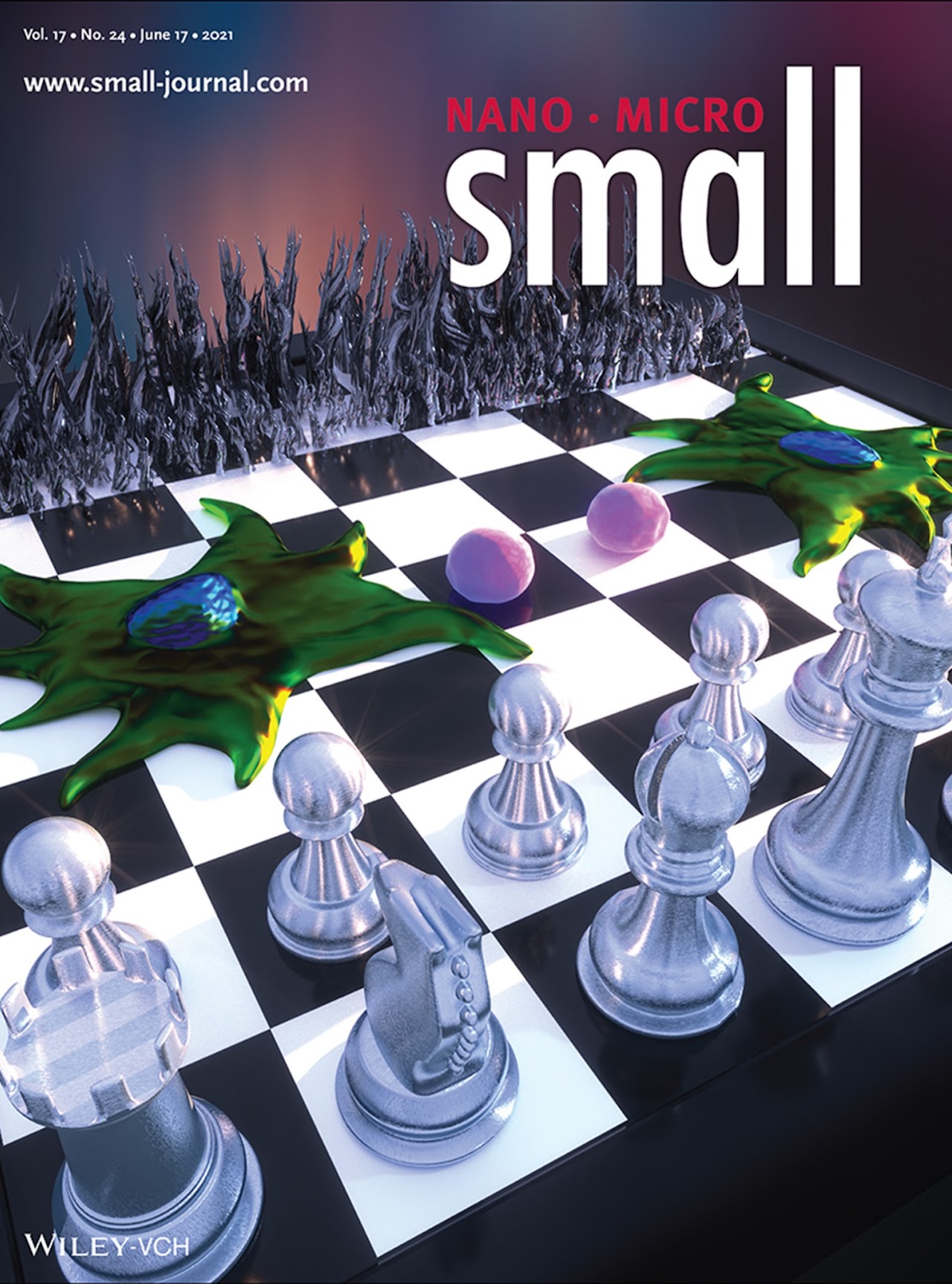We specialize in developing cutting-edge micro and nano-engineered tools tailored for precise quantitative measurements of objects immersed in liquid environments. Our work encompasses the monitoring, manipulation, and characterization of fluids and objects at both micro and nanoscales. Our overarching vision is to delve into the intricate micro/nano mechanical characteristics of single cells and subcellular components, with a focus on understanding their role in health and disease. This involves meticulously measuring various parameters such as shape, size, charge, mass, force, and viscoelasticity. However, the primary challenge lies in effectively handling these minute objects within cells and pushing the boundaries of measurement techniques at such a small scale.
To address these challenges, we employ advanced lithography and 3D nanomanufacturing techniques to fabricate multifunctional microfluidic devices. These devices, constructed from materials such as silicon or polymer, feature intricately structured surfaces within microfluidic channels, allowing precise control over femtoliter volumes of liquid. Leveraging these devices, we are able to pipette subcellular components with unparalleled precision. Furthermore, our research utilizes cutting-edge tools such as atomic force microscopy and laser Doppler vibrometry to conduct precise measurements directly within liquid environments.
Collaboration lies at the heart of our approach, as we work closely with theoretical micro/nano scientists, biophysicists, cell biologists, molecular biologists, analytical chemists, and structural biologists. By pooling our collective expertise and resources, we aim to achieve our research goals and advance our understanding of complex biological systems.
The research is organized in three interdependent themes.
Some of the key achievements:
- Fabrication of a piezoresistive microfluidic AFM cantilever. (Perez Garza et al, IEEE, 2013)
- Multiscale 3D-printed microfluidic AFM cantilever covering length scale resolution of millimeter to nanometer. (Kramer et al, Lab on a Chip, 2020)
- Volume and concentration dosing with two-channel microfluidic AFM cantilever. (Verlinden et al, Nanoscale, 2020)
- Discrete femtolitre volume control using a phase guided channel. (Blankespoor et al, Small methods, 2024)
- Adhesion strength and elastic modulus of preosteoblasts on nanopillar arrays (Angeloni et al, Small, 2023)
- Suspended microchannel resonators to measure buoyant mass of nanoparticles with a sensitivity of attograms. (Daryani et al, Microsystems & Nanoengineering, 2022)
Complete list of publications is available on google scholar.
More details are available on the personal website of Murali Ghatkesar.
Research leader: Murali Ghatkesar, Assistant Professor MNE
